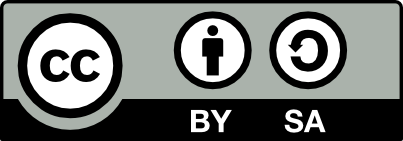Penerapan konsep hari derajat tumbuh untuk menentukan jadwal panen mangga yang optimal di Situbondo
DOI:
https://doi.org/10.70158/buitenzorg.v1i1.2Abstrak
Penentuan waktu panen optimal suatu komoditas pertanian dapat dicapai dengan menerapkan konsep growing degree day (GDD). Tujuan penelitian ini adalah untuk mengetahui potensi waktu berbunga hingga panen khususnya pada pengembangan budidaya mangga Arumanis 143 di luar musim (off-season). Penelitian dilakukan di perkebunan mangga Arumanis 143 milik PT. Trigatra Rajasa terletak di Desa Ketowan, Kecamatan Arjasa, Kabupaten Situbondo. Metode simulasi yang digunakan dalam penelitian ini adalah menghitung GDD kumulatif dengan menggunakan data suhu rata-rata harian dan suhu dasar buah mangga pada suhu 10°C. Simulasi mengasumsikan nilai kumulatif sebesar 543 OC pada awal fase pembungaan, nilai 945 OC pada awal fase berbuah, dan nilai 2942 OC pada saat panen untuk kualitas ekspor. Hasil simulasi menunjukkan bahwa pada kondisi musim, bunga mangga biasanya muncul antara 10 hari ketiga bulan Mei sampai dengan 10 hari ketiga bulan Juni (III Mei-Juni III), berasal dari tunas yang muncul antara bulan April III sampai Mei III. Kemunculan buah diperkirakan terjadi sekitar bulan Juni II-Juli II, dan waktu panen sekitar bulan Oktober II-November II. Pada kondisi di luar musim, awal kemunculan tunas, bunga, buah, dan panen mangga diperkirakan terjadi secara berurutan sekitar bulan Maret I-III, April I-III, April III-Mei II, dan Agustus III-September II. Hasil simulasi menunjukkan bahwa durasi pembuahan lebih lama (20-30 hari) dibandingkan kondisi eksisting sehingga mengakibatkan keterlambatan pemanenan buah sebesar 20-30 hari. Penelitian ini menekankan pentingnya mengidentifikasi waktu panen yang tepat berdasarkan fenologi pertumbuhan tanaman mangga Arumanis 143.
Kata kunci: lama berbuah, hari derajat tumbuh, waktu panen, mangga
Unduhan
Referensi
Bally, I.S.E. (2006). Mangifera indica (mango), ver. 3.1. In Elevitch, C.R. (ed.), Species Profiles for Pacific Island Agroforestry. Permanent Agriculture Resources (PAR). Hōlualoa, Hawai'i. http://www.traditionaltree.org .
Broto, W. (2003). Mangoes: Cultivation, Postharvest and Trading System. Jakarta: Agromedia Library.
Elnesr, M.N., & Alazba, A.A. (2016). An integral model to calculate the growing degree-days and heat units, a spreadsheet application. Computers and Electronics in Agriculture, 124, 37–45. https://awc.ksu.edu.sa/sites/ awc.ksu.edu.sa/files/imce_images/01-an_-integral_model_to_calculate_ the_growing_degree-days_and_heat_ units_a_spread-sheet_application .pdf.
Fitranto, R., Wahyono, N.D., & Wibisono, Y. (2020). Strategi pengembangan pemasaran buah mangga Arumanis 143 PT. Trigatra Rajasa Situbondo Jawa Timur. Journal of Indonesian Agribusiness, 8, 1, 58-68. https://doi.org/10.29244 /jai.2020.8.1.58-68.
Gartska, W.U. (1964). Snow and snow surveys. In Chow, Ven-Te (ed.), Handbook of Applied Hydrology, a compendium of water-resources technology. USA: McGraw-Hill Book Co.
Griffith, J.F. (1985). Climatology. In D.D. Houghton (ed.), Handbook of Applied Meteorology. New York : A Wiley- Interscience Publication.
Kanzaria, D.R., Chovatia, R.S., Varu, D.K., Polara, N.D., Chitroda, R.L., Patel H.N., & Patel, D.V. (2015). Influence of growing degree days (GDD) on flowering and fruit set of some commercial mango varieties under varying climatic conditions. The Asian Journal of Horticulture, 10, 130-133. http://www.researchjournal .co.in/upload/assignments/10_130-133_9999.pdf .
Kiloes, A.M., Nurmalinda, Handayani, Y., & Pitaloka, D. (2021). Understanding the importance of fresh mango quality attributes from the perspective of Indonesian domestic consumers. IOP Conf. Series: Earth and Environmental Science 892, 2021, 012102. doi:10.1088/1755-1315/892/1/012102
Lemos, L.M.C., Salomão, L.C.C, de Siqueira, D.L., Pereira, O.L., & Cecon, P.R. (2018). Heat unit accumulation and inflorescence and fruit development in 'Ubá' mango trees grown in Visconde do Rio Branco-MG. Revista Brasileira de Fruticulture. doi: 10.1590/0100-29452018491
Martha, N., Affandi, Istianto, M., Martias, Sparta, A., Sukarmin & Angriani, E. (2019). Technology cultivation supports off-season mangoes. A research results report. Solo: Hall Study Plant Fruit Tropical.
Morton, J. (1987). Mango. In Morton, J.F. (Ed.), Fruits of warm climates. Miami, FL.
Murdaningsih, S. (2019). Minister of Agriculture SYL Supports Development and Export Mango Fruit. News Daily Republika, 15 November 2019. Retrieved from https://republika.co.id/berita/q10dfu368/mentan-syl-dukung-pengembangan-dan-ekspor-buah-mangga.
Rai, M., Nath, V., Das, B., & Rai, A. (2003). Growing Degree Days requirements of mango cultivars for maturity under the sub-humid plateau region of eastern India. Project Plant genetic resource management of fruit crops. Retrieved from https://www.researchgate.net/ publication/305143621_Growing_degree_days_requirement_of_mango_cultivars_under_sub-humid_plateau_region_ of_eastern_India.
Rebin & Karsinah. (2010). A variety of superior new mango red from the Cukurgondang experimental station. Iptek Hortikultura. 6: 24-29.
Rebin, Karsinah, & Muryati. (2015). Garifta Mango Mainstay Future Exports. In I Djatnika, MJA Syah, D. Widiastoety, MP Yufdy, S. Prabawati, S. Pratikno and O. Luthfiyah (Eds.). Innovation Horticulture Lever Enhancement People's Income. Jakarta. IAARD Press.
Tim Mangga Balitbu Tropika. (2017). Technology Mango Fruiting Outside Season (Off-Season). Balitbu Tropical. Retrieved from http://balitbu.litbang.pertanian.go.id/index.php/hasil-penelitian-mainmenu-46/961-technology-pembuat-mangga-di-besar-besar-off-season.

Unduhan
Diterbitkan
Cara Mengutip
Terbitan
Bagian
Lisensi
Hak Cipta (c) 2024 Buitenzorg: Journal of Tropical Science

Artikel ini berlisensiCreative Commons Attribution-ShareAlike 4.0 International License.
The article is licensed under a Creative Commons Attribution-ShareAlike 4.0 International License (CC BY-SA), which allows both Authors and Readers to copy and distribute the material in any format or medium, as well as modify and create derivative works from it for any purpose, provided that appropriate credit is given (by citing the article or content), a link to the license is provided, and it is indicated if any changes were made. If the material is modified or used to create derivative works, the contributions must be distributed under the same license as the original.







